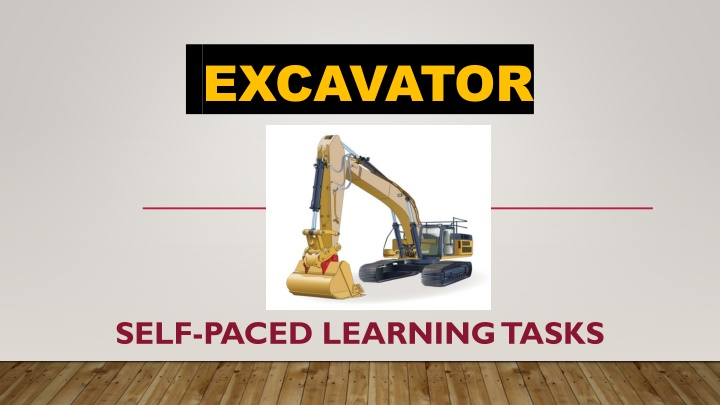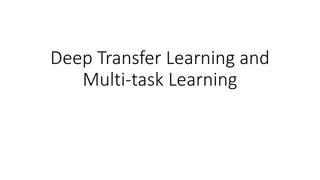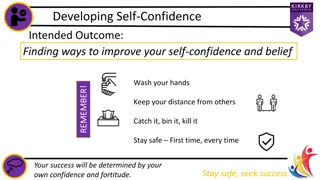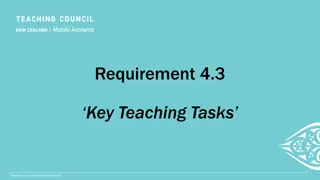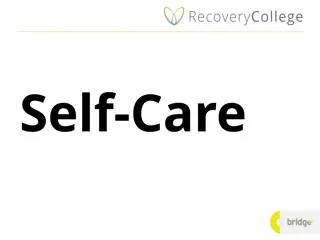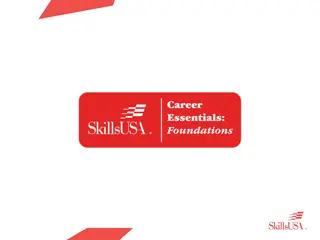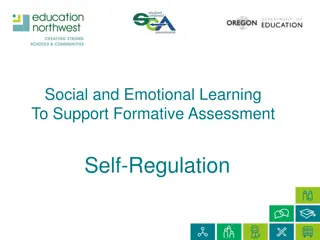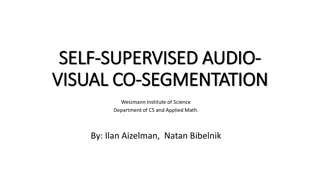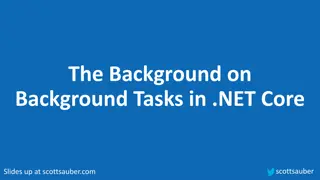Excavator Self-Paced Learning Tasks
Learn about personal protective equipment, risk assessment, and workplace communication for operating heavy equipment like an excavator. Tasks include identifying PPE, understanding risk assessment steps, and exploring communication methods. Take part in interactive learning activities to enhance your knowledge in construction safety and operations.
Download Presentation

Please find below an Image/Link to download the presentation.
The content on the website is provided AS IS for your information and personal use only. It may not be sold, licensed, or shared on other websites without obtaining consent from the author.If you encounter any issues during the download, it is possible that the publisher has removed the file from their server.
You are allowed to download the files provided on this website for personal or commercial use, subject to the condition that they are used lawfully. All files are the property of their respective owners.
The content on the website is provided AS IS for your information and personal use only. It may not be sold, licensed, or shared on other websites without obtaining consent from the author.
E N D
Presentation Transcript
EXCAVATOR SELF-PACED LEARNING TASKS
INSTRUCTIONS 1. Click the mouse on Slide Show. 2. Click on From Beginning to play the PowerPoint. 3. To type in your answers to a Task, click you mouse on END SLIDE SHOW. You can also right click the mouse and click on
TASK 1: PERSONAL PROTECTIVE EQUIPMENT (PPE) FOR HEAVY EQUIPMENT OPERATION To get the job done in construction, you need the right equipment. Aside from the heavy equipment itself, it is vital that you wear the right personal protective equipment or PPE. PPE is the last line of defense between worksite hazards and your body 1. Watch the video on what PPE to wear when you are using an excavator. 2. On the next page make a list of the PPE you need to wear. 3. Explain why you need to wear each piece of PPE.
Why do I need to wear this PPE when operating an excavator PPE
TASK 2: HOW TO COMPLETE A RISK ASSESSMENT. The model Code of Practice: How to manage work health and safety risks provides practical guidance about how to manage WHSrisks through a risk assessment process. See also our information on key considerations for businesses to take into account when assessing the risks associated with COVID-19, as well as an example risk register. How do I do a risk assessment? A safe and healthy workplace does not happen by chance or guesswork. You have to think about what could go wrong at your workplace and what the consequences could be. Then you must do whatever you can (in other words, whatever is reasonably practicable ) to eliminate or minimise health and safety risks arising from your business or undertaking. This process is known as risk management and involves the four steps (see Figure 1 below): Identify hazards find out what could cause harm. Assess risks, if necessary understand the nature of the harm that could be caused by the hazard, how serious the harm could be and the likelihood of it happening. This step may not be necessary if you are dealing with a known risk with known controls. Control risks implement the most effective control measure that is reasonably practicable in the circumstances and ensure it remains effective over time. Reviewhazards and control measures to ensure they are working as planned. 1. Watch the video on the next page.
1. Describe the steps you would take in a risk assessment. A risk assessment
TASK 3: UNDERSTANDING COMMUNICATION IN THE WORKPLACE Two-way radios is one method of communication in the workplace when using an excavator. A two-way radio is a radio that can both transmit and receive radio waves. 1. Watch the video. List the things you need to do when using a two way radio. a) .. b) . c) . d) .
TASK 4: HAND SIGNALS Hand signals one method of communication in the workplace when using an excavator. List the meaning of each hand signal. .. .
TASK 4: HAND SIGNALS (CONTINUED) List the meaning of each hand signal. .. .
TASK 4: HAND SIGNALS (CONTINUED) List the meaning of each hand signal. .. .
TASK 5: HAZARDS There are many hazards you must look for when operating an excavator. One the next page list 10 hazards you must be careful of.
List 10 hazards you must be careful of when using an excavator. 1 . 2 . 3 . 4 . 5 . 6 . 7 . 8 . 9 . 10 .
TASK 6: EXCAVATOR. PRE-OPERATIONAL CHECKS Look at the video. One the next page list some parts you need to check and why you need to check them.
List some examples of parts you need to check and why you need to check them. Machine part What do I need to look for when checking?
